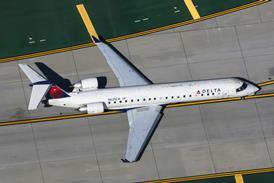The US Federal Aviation Administration is considering adopting a new requirement concerning "self-help" escape exits if and when the European Aviation Safety Agency moves on a final rule.
"EASA is working on a final rule that, among other things, would require Type III exits to have a fixed stowage point, similar to other types of exits," says the FAA. "This means that the Type III exits could not be removable hatches that require a person to find somewhere to place them [for example, on seats or on the wing]."
At present, a removable hatch is the typical Type III exit, except on the Next Generation 737, for which Boeing developed a top-hinged automatic hatch to comply with European regulations that otherwise would have limited its maximum exit-limit seating capacity.
The FAA says it has provided input to EASA on its proposal to disallow removable hatches for Type III exits. "If [and] when the EASA rule becomes final, FAA will consider whether to adopt a similar requirement," it says.
In advance of this rulemaking, Bombardier has decided to implement automatic, outward popping over-wing exit doors on its CSeries twinjet. Safety regulators in Europe and the USA "are proposing that all new designs have automatic ones, so we've just made that baseline on the airplane", says CSeries programme management director Benjamin Boehm.
Source: Flight International























